Answered step by step
Verified Expert Solution
Question
1 Approved Answer
The Psychoanalysts Read each selection, and answer the questions that follow. You may need to use a dictionary to help you find definitions. Be

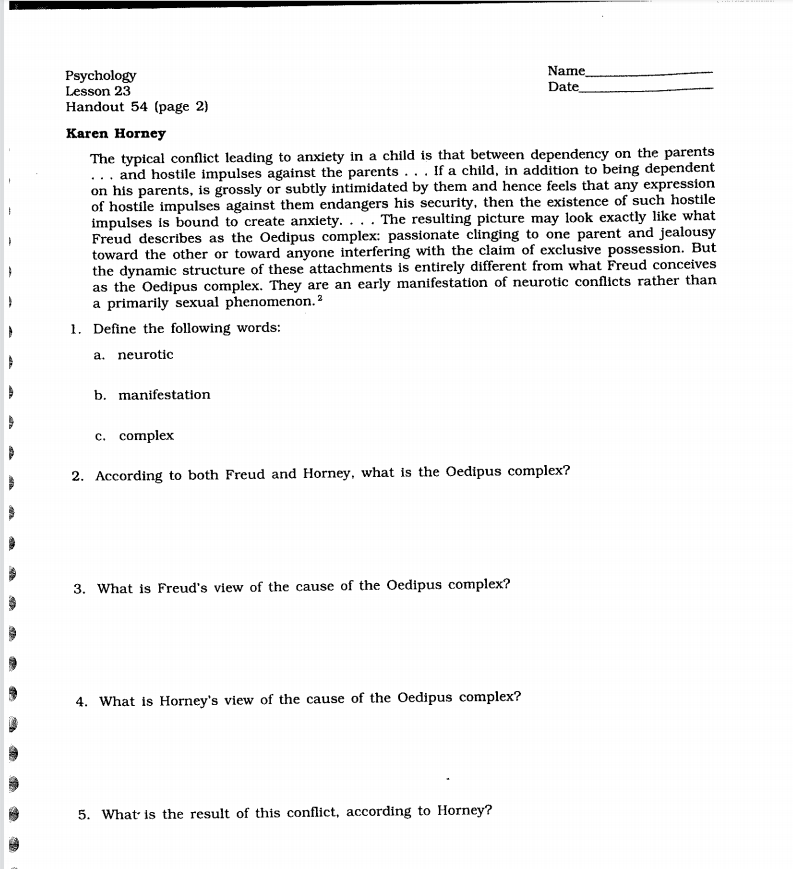
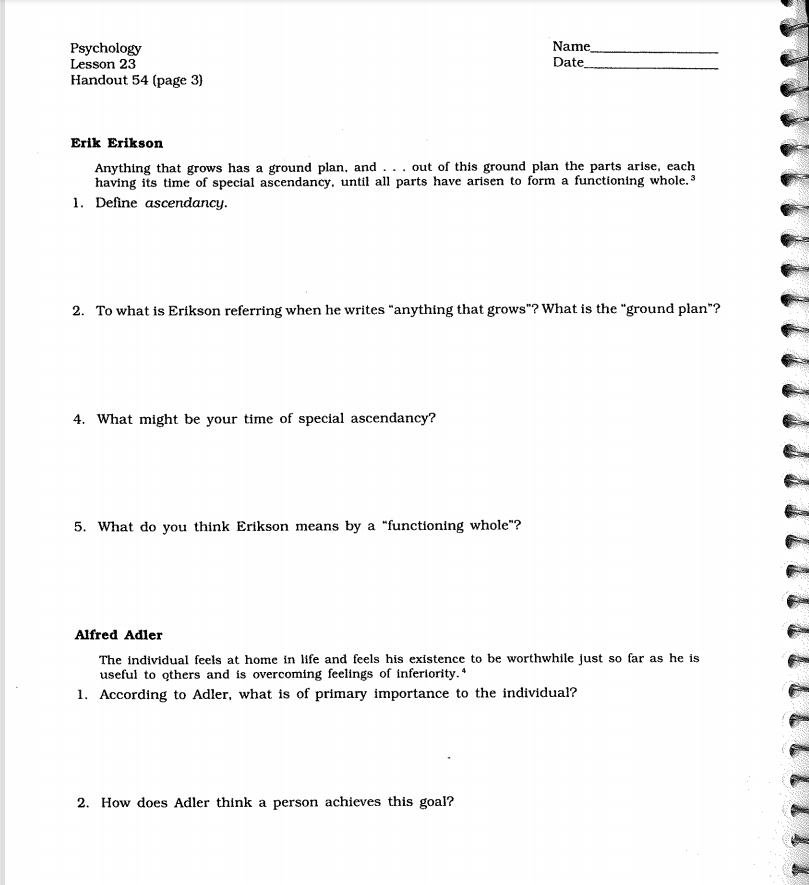

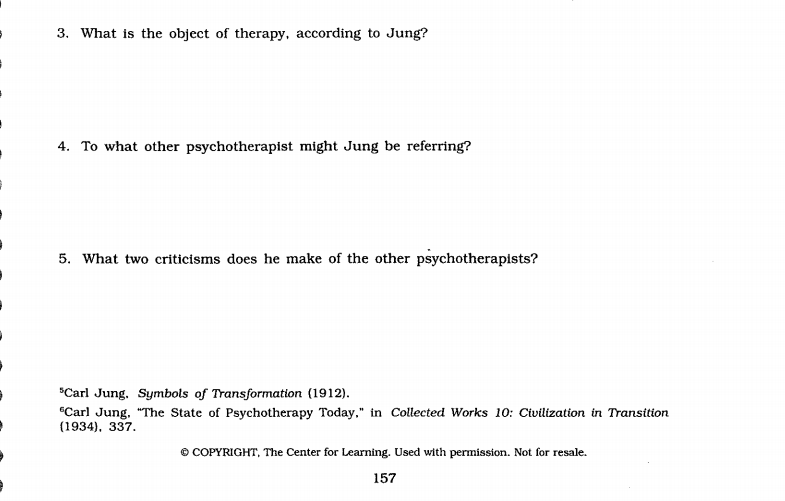
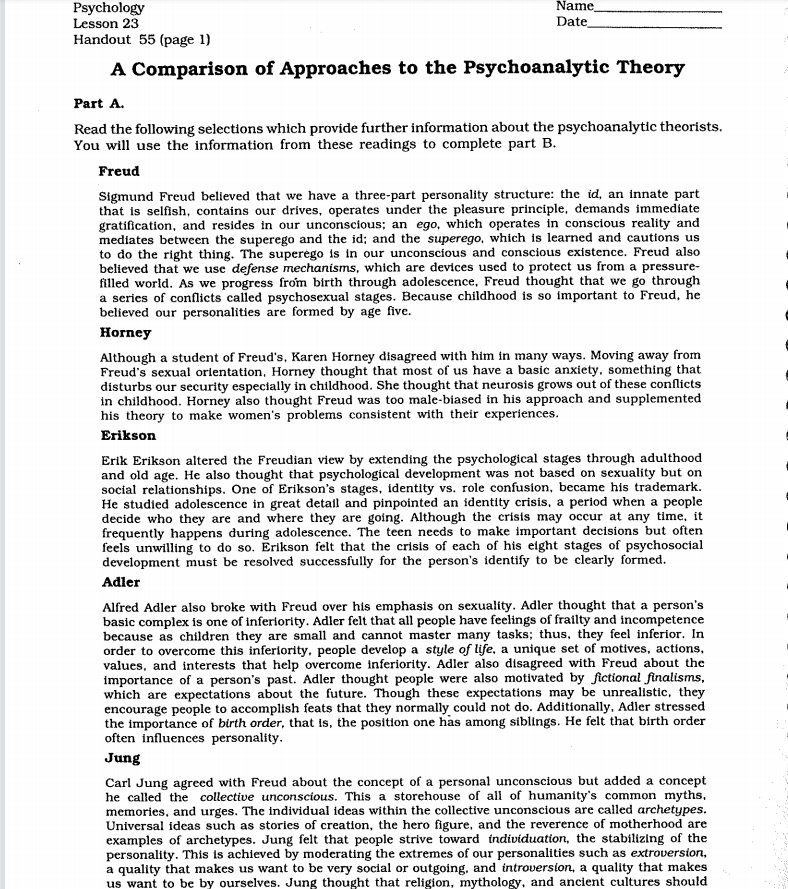

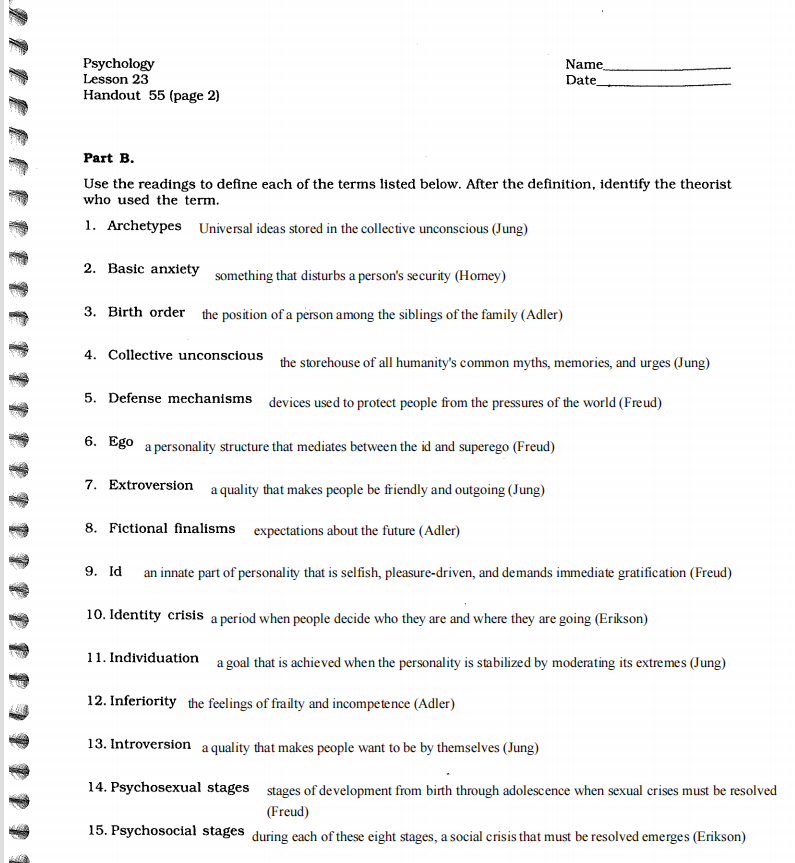
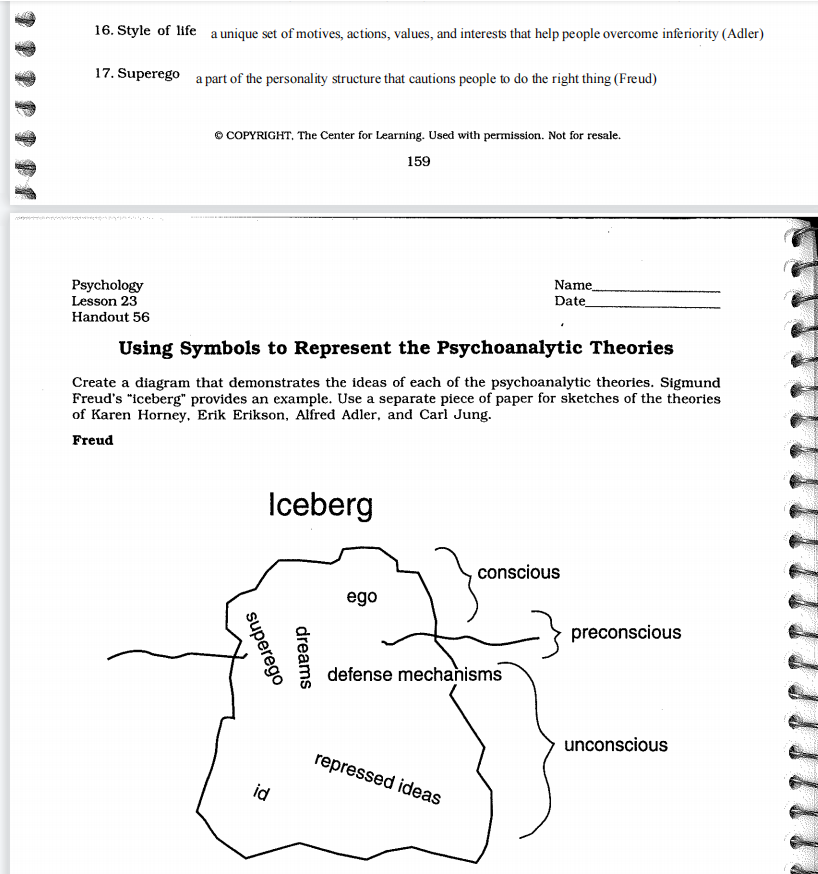
The Psychoanalysts Read each selection, and answer the questions that follow. You may need to use a dictionary to help you find definitions. Be prepared to explain and discuss your responses. Sigmund Freud In my search for the pathogenic situations in which the repressions of sexuality had set in and in which the symptoms as substitutions for what was represented had their origin, I was carried further and further back into the patient's life and ended by reaching the first years of childhood. What poets and students of human nature had always asserted turned out to be true; the impressions of that remote period of life, though they were for the most part buried in amnesia, left ineradicable traces upon the individual's growth and in particular laid the foundations of any nervous disorder that was to follow.' 1. Define the following words. a. pathogenic b. repression c. amnesia something capable of causing disease keeping memories or thoughts hidden in one's unconscious forgetting critical information about one's personal life d. ineradicable ideas or memories that cannot be erased 2. According to Freud, what causes mental problems? repression of sexuality 3. What period of life is most important in finding the basis for mental disorders? childhood 4. Interpret the phrase "symptoms of substitution" in the context of the passage. Then repressions will surface in disorders that seem unrelated to sexual repression 5. What does the phrase "buried in amnesia" mean? The events from childhood that are stored out of reach in the unconscious 6. List three concepts from this passage that seem to be important to Freud. repression of sexuality; the importance of childhood; the importance of information or events stored in the unconscious 'Sigmund Freud, An Autobiographical Study (New York: Norton, 1952), 60-61. COPYRIGHT, The Center for Learning. Used with permission. Not for resale. Psychology Lesson 23 Handout 54 (page 2) Karen Horney Name Date The typical conflict leading to anxiety in a child is that between dependency on the parents ... and hostile impulses against the parents. . . If a child, in addition to being dependent on his parents, is grossly or subtly intimidated by them and hence feels that any expression of hostile impulses against them endangers his security, then the existence of such hostile impulses is bound to create anxiety. . . . The resulting picture may look exactly like what Freud describes as the Oedipus complex: passionate clinging to one parent and jealousy toward the other or toward anyone interfering with the claim of exclusive possession. But the dynamic structure of these attachments is entirely different from what Freud conceives as the Oedipus complex. They are an early manifestation of neurotic conflicts rather than a primarily sexual phenomenon.2 1. Define the following words: a. neurotic b. manifestation c. complex 2. According to both Freud and Horney, what is the Oedipus complex? 3. What is Freud's view of the cause of the Oedipus complex? 4. What is Horney's view of the cause of the Oedipus complex? 5. What is the result of this conflict, according to Horney? Psychology Lesson 23 Handout 54 (page 3) Name Date_ Erik Erikson Anything that grows has a ground plan, and... out of this ground plan the parts arise, each having its time of special ascendancy, until all parts have arisen to form a functioning whole." 1. Define ascendancy. 2. To what is Erikson referring when he writes "anything that grows"? What is the "ground plan"? 4. What might be your time of special ascendancy? 5. What do you think Erikson means by a "functioning whole"? Alfred Adler The individual feels at home in life and feels his existence to be worthwhile just so far as he is useful to others and is overcoming feelings of inferiority. * 1. According to Adler, what is of primary importance to the individual? 2. How does Adler think a person achieves this goal? Erik Erikson, Identity: Youth and Crisis (New York: Norton, 1968). "Alfred Adler, Problems of Neurosis (1964). COPYRIGHT, The Center for Learning. Used with permission. Not for resale. Psychology Lesson 23 Handout 54 (page 4) 156 Name Date Carl Jung We can keep from a child all knowledge of earlier myths, but we cannot take from him the need for mythology.5 The object of therapy is not the neurosis but the man who has the neurosis. We have long known. for instance, that a cardiac neurosis comes not from the heart, as the old medical mythology would have it, but from the mind of the sufferer. Nor does it come from some obscure corner of the unconscious, as many psychotherapists still struggle to believe; it comes from the totality of a man's life and from all the experiences that have accumulated over the years and decades, and finally, not merely from his life as an individual but from his psychic experience within the family or even the social group." 1. What myths do children believe in? 2. Why might Jung think these myths are important? 3. What is the object of therapy, according to Jung? 4. To what other psychotherapist might Jung be referring? 3. What is the object of therapy, according to Jung? 4. To what other psychotherapist might Jung be referring? 5. What two criticisms does he make of the other psychotherapists? "Carl Jung, Symbols of Transformation (1912). "Carl Jung, "The State of Psychotherapy Today," in Collected Works 10: Civilization in Transition (1934), 337. COPYRIGHT, The Center for Learning. Used with permission. Not for resale. 157 Psychology Lesson 23 Handout 55 (page 1) Name, Date A Comparison of Approaches to the Psychoanalytic Theory Part A. Read the following selections which provide further information about the psychoanalytic theorists. You will use the information from these readings to complete part B. Freud Sigmund Freud believed that we have a three-part personality structure: the id, an innate part that is selfish, contains our drives, operates under the pleasure principle, demands immediate gratification, and resides in our unconscious; an ego, which operates in conscious reality and mediates between the superego and the id; and the superego, which is learned and cautions us to do the right thing. The superego is in our unconscious and conscious existence. Freud also believed that we use defense mechanisms, which are devices used to protect us from a pressure- filled world. As we progress from birth through adolescence, Freud thought that we go through a series of conflicts called psychosexual stages. Because childhood is so important to Freud, he believed our personalities are formed by age five. Horney Although a student of Freud's, Karen Horney disagreed with him in many ways. Moving away from Freud's sexual orientation. Horney thought that most of us have a basic anxiety, something that disturbs our security especially in childhood. She thought that neurosis grows out of these conflicts in childhood. Horney also thought Freud was too male-biased in his approach and supplemented his theory to make women's problems consistent with their experiences. Erikson Erik Erikson altered the Freudian view by extending the psychological stages through adulthood and old age. He also thought that psychological development was not based on sexuality but on social relationships. One of Erikson's stages, identity vs. role confusion, became his trademark. He studied adolescence in great detail and pinpointed an identity crisis, a period when a people decide who they are and where they are going. Although the crisis may occur at any time, it frequently happens during adolescence. The teen needs to make important decisions but often feels unwilling to do so. Erikson felt that the crisis of each of his eight stages of psychosocial development must be resolved successfully for the person's identify to be clearly formed. Adler Alfred Adler also broke with Freud over his emphasis on sexuality. Adler thought that a person's basic complex is one of inferiority. Adler felt that all people have feelings of frailty and incompetence because as children they are small and cannot master many tasks; thus, they feel inferior. In order to overcome this inferiority, people develop a style of life, a unique set of motives, actions, values, and interests that help overcome inferiority. Adler also disagreed with Freud about the importance of a person's past. Adler thought people were also motivated by fictional finalisms, which are expectations about the future. Though these expectations may be unrealistic, they encourage people to accomplish feats that they normally could not do. Additionally, Adler stressed the importance of birth order, that is, the position one has among siblings. He felt that birth order often influences personality. Jung Carl Jung agreed with Freud about the concept of a personal unconscious but added a concept he called the collective unconscious. This a storehouse of all of humanity's common myths, memories, and urges. The individual ideas within the collective unconscious are called archetypes. Universal ideas such as stories of creation, the hero figure, and the reverence of motherhood are examples of archetypes. Jung felt that people strive toward individuation, the stabilizing of the personality. This is achieved by moderating the extremes of our personalities such as extroversion, a quality that makes us want to be very social or outgoing, and introversion, a quality that makes us want to be by ourselves. Jung thought that religion, mythology, and ancient cultures should Jung Carl Jung agreed with Freud about the concept of a personal unconscious but added a concept he called the collective unconscious. This a storehouse of all of humanity's common myths, memories, and urges. The individual ideas within the collective unconscious are called archetypes. Universal ideas such as stories of creation, the hero figure, and the reverence of motherhood are examples of archetypes. Jung felt that people strive toward individuation, the stabilizing of the personality. This is achieved by moderating the extremes of our personalities such as extroversion, a quality that makes us want to be very social or outgoing, and introversion, a quality that makes us want to be by ourselves. Jung thought that religion, mythology, and ancient cultures should be studied to help achieve wholeness. COPYRIGHT, The Center for Learning. Used with permission. Not for resale. 158 Psychology Lesson 23 Handout 55 (page 2) Name Date Part B. Use the readings to define each of the terms listed below. After the definition, identify the theorist who used the term. 1. Archetypes Universal ideas stored in the collective unconscious (Jung) 2. Basic anxiety something that disturbs a person's security (Homey) 3. Birth order the position of a person among the siblings of the family (Adler) 4. Collective unconscious the storehouse of all humanity's common myths, memories, and urges (Jung) 5. Defense mechanisms devices used to protect people from the pressures of the world (Freud) 6. Ego a personality structure that mediates between the id and superego (Freud) 7. Extroversion a quality that makes people be friendly and outgoing (Jung) 8. Fictional finalisms expectations about the future (Adler) 9. Id an innate part of personality that is selfish, pleasure-driven, and demands immediate gratification (Freud) 10. Identity crisis a period when people decide who they are and where they are going (Erikson) 11. Individuation a goal that is achieved when the personality is stabilized by moderating its extremes (Jung) 12. Inferiority the feelings of frailty and incompetence (Adler) 13. Introversion a quality that makes people want to be by themselves (Jung) 14. Psychosexual stages stages of development from birth through adolescence when sexual crises must be resolved (Freud) 15. Psychosocial stages during each of these eight stages, a social crisis that must be resolved emerges (Erikson) 16. Style of life a unique set of motives, actions, values, and interests that help people overcome inferiority (Adler) 17. Superego a part of the personality structure that cautions people to do the right thing (Freud) Psychology Lesson 23 Handout 56 COPYRIGHT. The Center for Learning. Used with permission. Not for resale. 159 Name Date Using Symbols to Represent the Psychoanalytic Theories Create a diagram that demonstrates the ideas of each of the psychoanalytic theories. Sigmund Freud's "iceberg" provides an example. Use a separate piece of paper for sketches of the theories of Karen Horney, Erik Erikson, Alfred Adler, and Carl Jung. Freud Iceberg dreams superego conscious ego defense mechanisms id repressed ideas preconscious unconscious
Step by Step Solution
There are 3 Steps involved in it
Step: 1

Get Instant Access to Expert-Tailored Solutions
See step-by-step solutions with expert insights and AI powered tools for academic success
Step: 2

Step: 3

Ace Your Homework with AI
Get the answers you need in no time with our AI-driven, step-by-step assistance
Get Started


